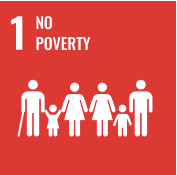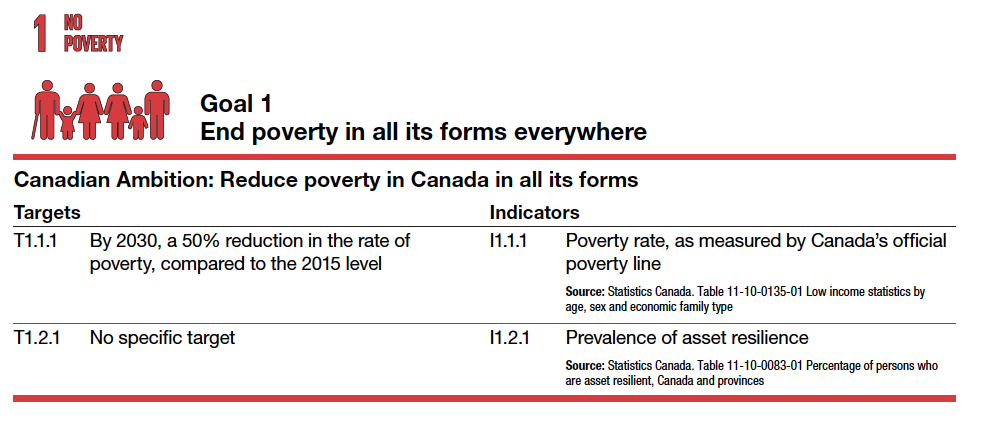Week 3

Video
In this 12-minute video made available from the SDG Academy, Jeffrey Sachs (Director of the Sustainable Development Solutions Network), looks at SDG#1 – ending extreme poverty. He discusses the resources available and how a lack of income distribution creates vast inequalities.
Analysis
Eradicating poverty in all its forms remains one of humanity’s greatest challenges. Poverty forces individuals to make difficult choices, often between paying for necessities such as shelter, healthy food, clothing and medication, and causes food insecurity, social exclusion, inadequate housing, lack of access to services and other hardships. Poverty’s multidimensional nature means that governments need to respond to both its causes and its consequences by addressing the various deprivations faced by those living in poverty[1].
Globally, more than 700 million people, or 10% of the world population, live in extreme poverty – meaning they struggle to fulfil the most basic needs like health, education, and access to water and sanitation, to name a few. The international poverty line, currently set at $1.90 a day, is the universal standard for measuring global poverty. This line helps measure the number of people living in extreme poverty and helps compare poverty levels between countries. As the cost of living increases, poverty lines increase too. Since 1990, the international poverty line rose from $1 a day, to $1.25 a day, and most recently in 2015 to $1.90. This means that $1.90 is necessary to buy what $1 could in 1990[2].
Nationally, in Canada, 3.7 million people or 10.1% of the population were living below the poverty line in 2019[3]. This includes 9.7% or 1 in 10 children under the age of 18 were living in poverty. Canada’s official poverty line was defined in 2019 based on the Market Basket Measure (MBM), defined by people who do not have enough income to purchase a specific basket of goods and services in their community3.
Regionally, in Niagara, 64,000 people or 14.2% of the population were living below the poverty line in 2016[4]. This includes 1 in 7 children under the age of 18 were living in poverty, which is 4.5% more than the national statistic (4). Niagara has one of the highest youth poverty rates in all of Canada[5].
For those who work, having a job does not guarantee a decent living. In fact, 8% of employed workers and their families worldwide lived in extreme poverty in 20182. Ensuring social protection for all children and other vulnerable groups is critical to reduce poverty2.
Fast Facts
- One out of five children globally live in extreme poverty and the negative effects of poverty and deprivation in the early years have ramifications that can last a lifetime;
- It is estimated that child poverty affects about 50% of the world’s children, or approximately 1.1 billion children worldwide live in poverty;
- According to the most recent estimates (2015) – 10 % of the world’s population or 734 million people lived on less than $1.90 a day;
- Worldwide, the poverty rate in rural areas is more than 3 times higher than in urban areas;
- The majority of people living on less than $1.90 a day live in sub-Saharan Africa;
- Although countries impacted by fragility, crises, and violence are home to about 10% of the world’s population, they account for more than 40% of people living in extreme poverty. By 2030, an estimated 67% of the world’s poor will live in fragile contexts;
- In 2016, 55% of the world’s population – about 4 billion people – did not benefit from any form of social protection;
- Even before COVID-19, baseline projections suggested that 6% of the global population would still be living in extreme poverty in 2030, missing the target of ending poverty. The fallout from the pandemic threatens to push over 70 million people into extreme poverty;
- Southern Asia and sub-Saharan Africa are expected to see the largest increases in extreme poverty, with an additional 32 million and 26 million people, respectively, living below the international poverty line as a result of the pandemic.
Why it matters
Why should I care about other people’s economic situation? There are many reasons, but in short, because as human beings, our well-being is linked to each other. Growing inequality is detrimental to economic growth and undermines social cohesion, increasing political and social tensions and, in some circumstances, driving instability and conflicts. As we have seen with COVID-19, we are ALL connected. What happens globally affects us all.
Targets and Indicators for Canada
As an example of a country level approach, below we will look at Canada’s way of measuring progress on SDG #1 – No Poverty. Note the targets and indicators chosen[6].
In comparison we will now look at the UN agreed upon SDG targets and indicators. You will see through Canada’s example above, how an individual country can choose to implement the SDGs while benchmarking to the globally agreed 2030 Agenda targets and indicators.[7]
- By 2030, eradicate extreme poverty for all people everywhere, currently measured as people living on less than US $1.90 a day
- Proportion of population below the international poverty line, by sex, age, employment status and geographical location (urban/rural)
- By 2030, reduce at least by half the proportion of men, women and children of all ages living in poverty in all its dimensions according to national definitions
- Proportion of population living below the national poverty line, by sex and age
- Proportion of men, women and children of all ages living in poverty in all its dimensions according to national definitions
- Implement nationally appropriate social protection systems and measures for all, including floors, and by 2030 achieve substantial coverage of the poor and the vulnerable
- Proportion of population covered by social protection floors/systems, by sex, distinguishing children, unemployed persons, older persons, persons with disabilities, pregnant women, newborns, work-injury victims and the poor and the vulnerable
- By 2030, ensure that all men and women, in particular the poor and the vulnerable, have equal rights to economic resources, as well as access to basic services, ownership and control over land and other forms of property, inheritance, natural resources, appropriate new technology and financial services, including microfinance
- Proportion of population living in households with access to basic services
- Proportion of total adult population with secure tenure rights to land, with legally recognized documentation and who perceive their rights to land as secure, by sex and by type of tenure
- By 2030, build the resilience of the poor and those in vulnerable situations and reduce their exposure and vulnerability to climate-related extreme events and other economic, social and environmental shocks and disasters
- Number of deaths, missing persons and persons affected by disaster per 100,000 people
- Direct disaster economic loss in relation to global gross domestic product (GDP)a
- Number of countries with national and local disaster risk reduction strategies
- Ensure significant mobilization of resources from a variety of sources, including through enhanced development cooperation, in order to provide adequate and predictable means for developing countries, in particular least developed countries, to implement programmes and policies to end poverty in all its dimensions
- Proportion of resources allocated by the government directly to poverty reduction programmes
- Proportion of total government spending on essential services (education, health and social protection)
- Create sound policy frameworks at the national, regional, and international levels, based on pro-poor and gender-sensitive development strategies, to support accelerated investment in poverty eradication actions
- Proportion of government recurrent and capital spending to sectors that disproportionately benefit women, the poor and vulnerable groups
Recommended Reading
- United Nations. (2021). The Sustainable Development Goal Report, 2020. End poverty in all its forms everywhere.
- Global Affairs Canada. (2018). Canada’s Implementation of the 2030 Agenda for Sustainable Development: voluntary national review. ↵
- United Nations. (2021). Sustainable Development Goals. ↵
- Statistics Canada. (2021). Canadian Income Survey, 2019 ↵
- Niagara Connects. (2021). Living in Niagara Report 2020 ↵
- Statistics Canada. (2017). Children living in low-income households ↵
- Statistics Canada. (2021). The Canadian Indicator Framework for the Sustainable Development Goals - 2021. ↵
- United Nations Statistics Division. (2021). Global indicator framework for the Sustainable Development Goals and targets of the 2030 Agenda for Sustainable Development. ↵


